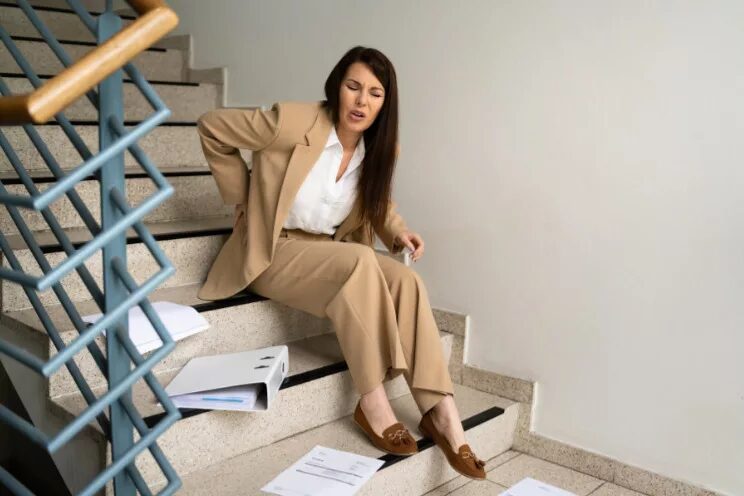
Losing a loved one due to someone else’s negligence is a devastating experience. In such tragic situations, understanding the legal process of presenting a wrongful death claim can help compensate for your loss(es). This step-by-step guide aims to provide a comprehensive overview of the legal process involved in filing a wrongful death claim. By familiarizing yourself with the necessary steps, you can navigate this complex process with confidence and increase your chances of obtaining fair compensation.
Understanding Wrongful Death Claims
To initiate the legal process, it is essential to have a clear understanding of what constitutes a wrongful death claim. A wrongful death claim arises when a person’s death occurs due to the negligent, reckless, or intentional actions of another individual or entity. This claim seeks compensation for the surviving family members, who have suffered financial, emotional, and psychological damages as a result of the loss.
Identifying Qualifying Surviving Family Members
Who qualifies as a ‘surviving” family member able to pursue a wrongful death claim is determined by state statute. In Arizona, surviving biological and adoptive parents, spouses, biological and adopted children can pursue a wrongful death claim. Sadly, surviving siblings, fiances, step-parents and step-children are not deemed statutory survivors (aka “beneficiaries”) under Arizona law.
Under Arizona law, all viable statutory survivors/beneficiaries share in a single wrongful death claim. This can create issues as all eligible beneficiaries may not agree to the same proposed split of available settlement proceeds/policy limits. This can create conflicts of interests for attorneys seeking to represent multiple and/or all eligible claimants.
Identifying the Responsible Party
Determining the party responsible for the wrongful death is a critical aspect of the legal process. Depending on the circumstances, the responsible party may be an individual, a corporation, a company, a government entity, or a combination thereof. Your attorney will conduct a thorough investigation to establish liability and identify the appropriate defendant(s) in your case.
Gathering Evidence
One of the crucial steps in filing a wrongful death claim is gathering evidence to support your case. A wrongful death compensates statutory beneficiaries for their individual and/or collective loss of love, companionship, financial support, etc.
Evidence in support of building the value of the statutory beneficiaries’ claim(s) can include family cards, family videos, family photos, letters to/from the decedent to statutory beneficiaries, financial statements, check registrars, character/relationship observation affidavits, funeral expenses, funeral memorials, etc.
The wrongful death claim of statutory beneficiaries does not include medical bills incurred by the deceased after their injury at issue but prior to their actual passing. Pursuit of payment for medical bills incurred by the decedent is available to a decedent’s “estate,” under a separate and/or derivative action.
Hiring an Attorney
Engaging the services of a skilled wrongful death attorney is crucial for navigating the legal process effectively. An experienced attorney specializing in wrongful death claims will provide valuable guidance and handle the complexities of the case on your behalf, and those of your fellow beneficiaries. They will ensure that all necessary paperwork is filed correctly, negotiate with insurance companies, and advocate for your rights throughout the legal proceedings.
Filing the Claim
Once all the evidence is gathered and the responsible party is identified, your attorney will submit the wrongful death claim on your behalf, and all other eligible statutory beneficiaries. If litigation becomes necessary, your attorney will file the lawsuit on your behalf and on behalf of your fellow beneficiaries. Your attorney does not have to necessarily “represent” your fellow beneficiaries in such a lawsuit, but he/she does have to ethically protect “their” interests. Beneficiaries other than yourself, may choose to retain your attorney’s legal services, or they may choose to retain separate counsel, or they may choose to represent themselves. Regardless, the at-fault insurance carrier cannot, and will not, settle with any individual claimants. They will insist on settling with all statutory beneficiaries as a wrongful death claim is a single claim with multiple claimants
If litigated, each beneficiary will get the opportunity to testify to the jury and describe their relationship to the decedent, and the losses they have suffered from the decedent’s passing.
Conclusion
Filing a wrongful death claim is a complex legal process that requires careful attention to detail and expert guidance. By understanding the step-by-step guide outlined above, you can navigate this difficult journey with confidence. Remember, it is crucial to consult with an experienced wrongful death attorney who can provide personalized guidance and support throughout the entire process. Although seeking legal recourse cannot replace the loss of a loved one, it can provide the financial support necessary for you and your family to move forward with your lives.
Book a Free Consultation With Our Trusted Wrongful Death Attorney In Phoenix
As a victim of a Wrongful Death in Phoenix, our legal team at Lebovitz Law Group can help you get maximum compensation from the negligent party. We work on a contingency fee basis, meaning you don’t pay us until we win your case. Contact us today for a free case review. Call 602-975-5550.
Sort by Category
Related Posts

Attacked by a Dog at Someone’s Home: Can I Sue the Homeowner in Arizona?
Arizona law gives strong protection to anyone who is bitten or attacked by a dog while visiting someone’s home. Most victims hesitate because the incident happened at a friend’s place, and they worry the situation will damage the relationship. The truth is, Arizona...

How Property Owners Try to Avoid Slip and Fall Liability in Phoenix
Slip and fall accidents happen more often than most people realize. Every year, over a million people seek emergency room treatment for fall-related injuries. What starts as an ordinary trip to the grocery store, a walk through a parking lot, or a visit to a...

How Much Is My Phoenix Car Accident Case Actually Worth?
After a crash, most victims quickly face medical bills, lost income, car repairs, and overwhelming stress. One of the biggest questions becomes: What is my car accident case really worth? The truth is, no online calculator can tell you the actual value of your...

Arizona’s Strict Liability Dog Bite Law: What Every Victim Should Know
Dog attacks can be terrifying and traumatic. When an aggressive dog turns violent, victims are often left with painful wounds, permanent scarring, infections, and emotional trauma that lingers long after the incident. Just under 4.5 million people in America are...

Hit by a Car While Biking in Phoenix: Your Complete Legal Roadmap
Cycling is a popular way to commute and explore Phoenix. But despite growing bike lanes and awareness campaigns, Arizona continues to see a high number of bicycle accidents involving vehicles. In 2023 alone, Maricopa County witnessed 681 cyclists injured and 26...

How Long Do I Have to File a Personal Injury Lawsuit in Arizona?
Filing a personal injury lawsuit in Arizona requires understanding the statute of limitations, which dictates how long you have to pursue legal action after an accident or injury. Missing this critical deadline can prevent you from seeking compensation for medical...
